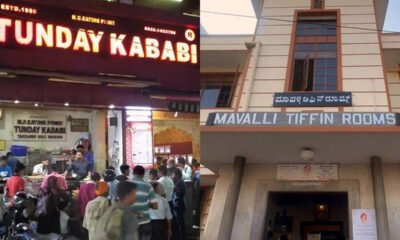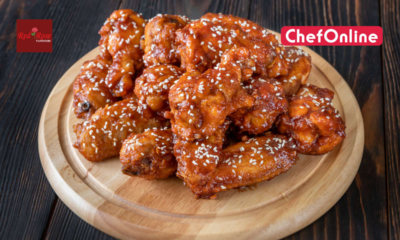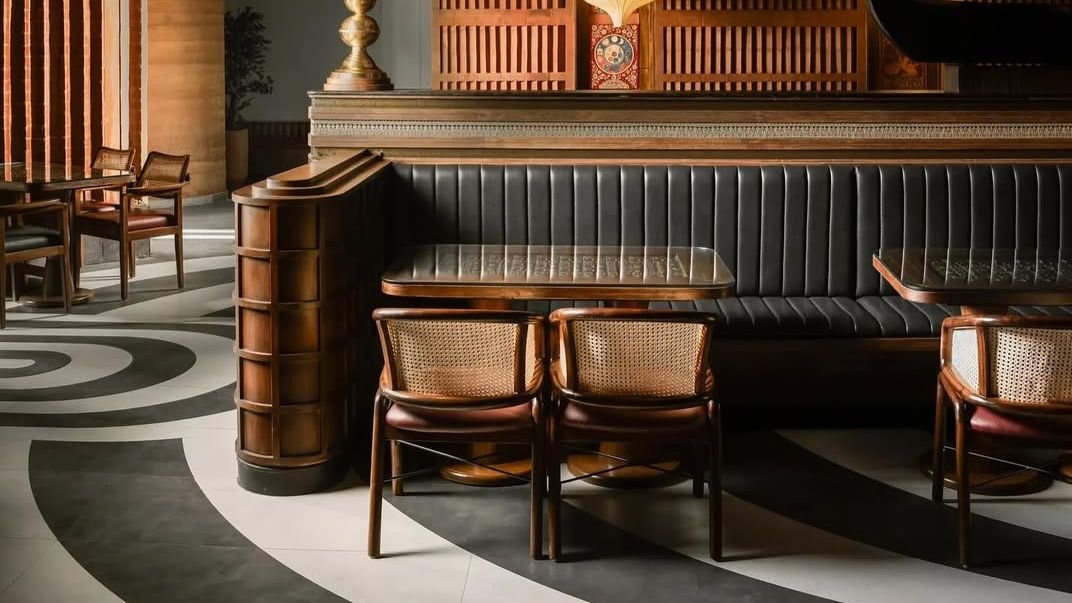Restaurants & Food
The Must-Try Dishes and Restaurants in Tulum, Mexico

Tulum has long been an escape in the Yucatan Peninsula, but its popularity has been surging in recent years. Unlike the larger cities of Cancun and Playa del Carmen, Tulum is further off the beaten track and still attracts slightly more adventurous and experienced travelers. Tulum is trendy, with Instagram-worthy macrame swings and chic boutiques along the busy roads throughout town and along the beach.
Below are the must-try dishes and restaurants in Tulum, a foodie enclave on the southern end of the Riviera Maya in Mexico.
Tulum Cuisine Guide
Today, Tulum has expanded far beyond its origins as a quiet outpost along the Riviera Maya. This longtime destination for yoga enthusiasts has grown into its own scene. Travelers of all ages will find hip restaurants and adventurous bars that seem to be trying to keep pace with their trendy clientele.
About Tulum cuisine
Travelers will find both traditional and modern cuisines throughout Tulum. Many dishes are Mayan in origin. For example, many menus include cochinita pibil, a traditional style of barbecue pork. The pork is cooked with orange juice and achiote, a spice made from the seeds of a local shrub.
The modern dishes and menus cater to a variety of dietary restrictions. Unlike many other destinations in Mexico, most restaurants will have vegetarian and vegan options available and clearly listed on the menu. From grain-free coconut tacos to spicy habanero margaritas made with mezcal, the cuisine is typically approachable yet upscale.
What to try in Tulum
Restaurants in Tulum tend to feature fresh ingredients, stylish presentations, and trendy menu items. Most eateries tend to have menus with either local or international cuisines, so be sure to try both while in Tulum. Visitors can find local dishes in taquerias, traditional restaurants, and roadside stands serving tacos or other quick meals.
Tacos
It would be a shame to visit Tulum as a meat eater and not try tacos al pastor, made with spit-roasted, seasoned pork and served with onions, cilantro, and lime. Alternatively, vegetarians and vegans may seek out tacos made with rajas, strips of roasted poblano peppers, or nopales, strips of cooked cactus. Depending on the restaurant, these tacos may or may not be paired with cheese.
Tacos are available on menus throughout Tulum, from small trucks to upscale dining establishments. Seek out the affordable and tasty taco trucks throughout Tulum Pueblo, especially the trucks with a small swarm of people waiting to order. A good rule of thumb is that the busiest spots usually have the best tacos.
Fresh fruit plates
One of the best and healthiest breakfast options in Tulum is a plate of fresh, seasonal fruit. Choose a restaurant that is busy, appears clean, and has good reviews to avoid food safety concerns. Seek out fresh, tropical fruits like figs, papayas, pineapples, and coconuts.
Salsas and chili sauces
Although it’s possible to find spicy food in the Yucatan Peninsula, most of the dishes will be mildly hot with rich and complex flavors. There are many types of popular chilis in Tulum, so be sure to try a variety of fresh and bright salsas. Guacamole is also available on many menus, and it’s always a crowd favorite.
Seafood
Visitors will see seafood on menus throughout Tulum – unsurprising, because there are fishing boats anchored just off the shore along the beach. Try a fresh ceviche, grilled fish, or crispy fish tacos, preferably when they’re made fresh. Take care at eateries near the beach and never eat raw fish that has been sitting in the sun.
Health Food
Tulum is known for being a foodie haven and center for yoga enthusiasts. Accordingly, the area is full of trendy and healthy foods and restaurants reminiscent of San Francisco and Los Angeles. Try a healthy smoothie made with coconut and dates, a freshly made acai bowl, or a chia pudding from one of many health-conscious restaurants in Tulum.
If there are health food trends on TikTok or Instagram, chances are they’ll be available to try somewhere in Tulum.
Restaurants to try
Tulum is split into two main areas, the town of Tulum and the beach zone, known locally as the “hotel zone.” There are great restaurants with tasty food and innovative menus in both areas of Tulum. However, travelers will quickly note that there are much higher prices at the establishments along the beach.
Here are a few restaurants to try in each area.
Tulum Pueblo / The Town of Tulum
In town, diners find plenty of locals and tourists alike in the much more affordable restaurants and shops. There are a few restaurants scattered throughout the town, but the majority of the popular spots are located along the main road, Chetumal/México 307. Travelers can walk, bike, or drive through Tulum Pueblo, depending on the location of their hotel.
Taqueria La Chiapaneca
There are traditional taquerias located across town of Tulum. One notable spot is Taqueria La Chiapaneca, a favorite of many locals and tourists. There’s often a line outside, and inside there are tables full of people devouring plates with tacos, empanadas, sopes, and many other dishes piled high with avocado, lettuce, and cheese.
In addition to tacos and other favorites, be sure to try a panucho – a local favorite made by stuffing corn tortillas with black beans and other fillings. Travelers can mix and match from the menu, so it’s possible to try a little bit of everything. Don’t be deterred by the line outside, it moves quickly.
Burrito Amor
Set in the town of Tulum is a small burrito hut that serves tasty yet traditional Tex Mex style burritos wrapped in banana leaves. This restaurant is budget friendly, caters to a variety of dietary needs, and serves consistently tasty foods made with high quality ingredients.
Try a vegetarian or chicken burrito, served with plenty of fresh salsas, and an order of guacamole. Like many restaurants in Tulum, there is an assortment of tasty and fresh juices and smoothies on the menu, pressed or blended fresh to order.
Zona Hotelera / The Hotel Zone
Along the beach there are much more expensive resorts and restaurants that cater almost exclusively to foreign visitors. Travelers who choose a hotel in town can usually park in the hotels’ parking lots so long as they dine at the restaurant. Ask the parking lot attendant upon arrival for further instructions.
The Real Coconut
Located inside the beautiful Sanara Hotel, the Real Coconut is a grain free and dairy free restaurant with innovative and health-conscious cuisine. The smoothies are exceptional, typically made with dates, coconut milk, and bananas to create a cool and creamy base.
Also notable are the coconut tortillas, either served as soft shell tacos or cut and fried into perfect tortilla chips. The restaurant’s owner, Daniella Hunter, has since published a cookbook that divulges many of the restaurant’s secrets for exceptional diet-conscious fare.
Diners can often enjoy live music while looking out over the beach. Go around sunset for the best views or early in the morning to pair with a yoga class in the nearby studio.
Zamas Beach Restaurant
Zamas is a relatively unassuming hotel in the Zona Hotelera with a quiet beachside restaurant. Visitors can pull up a colored chair and look out over the ocean for a sunset meal and cocktail. The menu contains traditional Tulum favorites, and the cocktails are always refreshing.
Zamas Beach Restaurant is the perfect place to spend a quieter afternoon or evening set back from the hustle and bustle of the Zona Hotelera. Bring bug spray or plan to sit in a windier spot; the mosquitos can be formidable on that section of beach.
What to do when visiting Tulum
While visiting Tulum, and between tasty meals, be sure to visit some of the area’s best attractions. Go for a swim in a cenote, explore a famous set of Mayan ruins, and enjoy the beautiful beaches. For a little self-care while traveling, try a relaxing sound bath at Sanara Hotel – home to the Real Coconut – or Holistika.
For travelers with a rugged car or adventurous spirit, head to the Sian Ka’an Biosphere Reserve. The biosphere is home to a floating river, the Muyil Ruins, and it’s a UNESCO World Heritage site. The roads into the Sian Ka’an Biosphere can be unreliable, a tour is recommended for visitors who don’t have experience navigating challenging roads.
Don’t be afraid to ask hotel staff about upcoming special events throughout Tulum.
Restaurants & Food
28 new restaurants in India you should grab a meal at this August – Vogue India
Restaurants & Food
The Taste by Vir Sanghvi: Indian restaurants shine globally with Michelin stars and authentic flavours
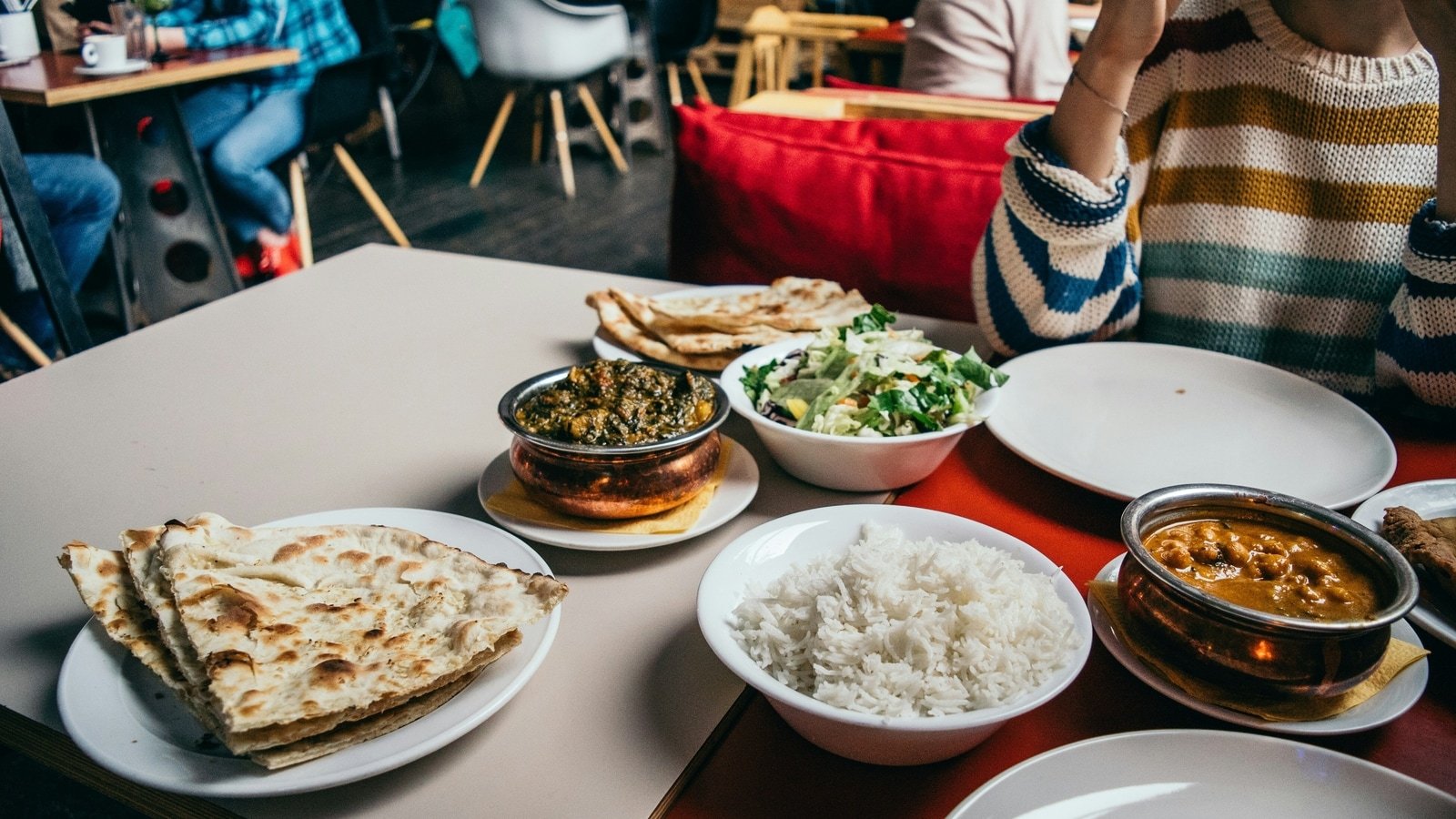
You have probably heard of Semma, the only Indian restaurant in New York to win a Michelin star. And of Gymkhana, the only Indian restaurant with two Michelin stars in London. Of Jamavar, the only Indian restaurant in the world to have won Michelin stars in three different avatars in three different cities: London, Doha and Dubai.
What, you may well ask, do these restaurants have in common?
There are two answers to this question. The first is the obvious one: they are all Indian restaurants run by chefs who have worked or trained in India. Vijaya Kumar of Semma is very proud of cooking the authentic cuisine of Tamil Nadu’s not-so-elevated castes and makes it hot and spicy. (He started out at the Taj Connemara in Chennai.) His boss, and one of the founders of Unapologetic Foods, which owns Semma, Chef Chintan Pandya, says that the group gets its name from its determination to refuse to apologise for the flavours and oil that characterise Indian food. (Chintan is ex-Oberoi.)
In London, one of the first things that Karam Sethi, the chef-founder of Gymkhana, said to me when I called to congratulate him on Gymkhana’s two stars was “it’s real Indian food, not ‘modern’ Indian.” Gymkhana serves the sort of food Indians actually eat, not a poncy, spice-deprived version. Gymkhana’s Executive Chef Sid Ahuja is ex-Oberoi and Sethi himself trained with ITC.
The most recognisable Indian of the top global restaurants is Jamavar. It was founded by Dinesh Nair, whose family used to own Leela Hotels, and is run by his whiz-kid daughter, Samyukta. The London Jamavar is international in clientele but you will nearly always see a top Indian movie star or cricketer there. This may have something to do with the fact that its chef, Surender Mohan, commands after his years working with the Leela group in India.
Samyukta and Surender took Jamavar to Doha where it became just one of two restaurants to win a Michelin star. (The other restaurant with a star is run by Alain Ducasse.) Next, they opened in Dubai and within a few months of opening, they had a star there too.
I met Surender at the Michelin ceremony in Dubai and was pleased to see that he was one of the few chefs not to be intimidated by the occasion and he gave the longest and best speech of the evening. But then I guess he is now used to attending these events in city after city.
Clearly something new and unusual is happening with Indian food abroad even if we don’t fully understand it here in India. There have been, broadly, four phases with Indian food in the West. The first was the ‘ethnic food’ phase when Indian food became the browner equivalent of chop suey and restaurants served mostly made-up Indian dishes at inexpensive prices.
The second was when Indian food went upmarket but was also Frenchified and plated. In the UK, restaurants serving this kind of food were celebrated and some got Michelin stars. In New York, Floyd Cardoz served two kinds of cuisine. At Tabla, he served a nouvelle take on Indian food and got three stars from the New York Times. But downstairs, at the Bread Bar, the food was more basic and less nouvelle. Even so, the general rule was that if you wanted rave reviews and high-profile rich guests, then you moved away from traditional Indian.
The third phase coincided with a global change in food preferences when French food ceased to be as admired as much. As El Bulli and later, Noma, set the trend, this was reflected in Indian food too. Gaggan Anand worked with the Adria brothers of El Bulli and opened a restaurant in Bangkok that served the kind of Indian food nobody had imagined could exist. Also, in Bangkok, Garima Arora opened Gaa which went on to win two Michelin stars. There was a fair amount of cross-fertilisation. Garima had worked with Rene Redzepi at Noma and with Gaggan. Redzepi himself had worked at El Bulli.
Almost simultaneously, Manish Mehrotra, whose resume included no great restaurants, invented his own version of modern Indian cuisine at Delhi’s Indian Accent. Mehrotra’s background was oriental cuisine so he had no interest in Frenchifying his food. Mehrotra and Gaggan ended up being the most influential Indian chefs of this century with their dishes being copied all over the world.
Himanshu Saini, the only Indian chef with a restaurant that has three Michelin stars (Dubai’s Tresind Studio) worked with Manish and is candid about his debt to the master.
But now I think we are into a third phase. People want Indian food without the frills. They want to eat like Indians eat in India. Vikas Khanna, India’s most famous chef, opened Bungalow in New York, serving food that was no different to the food he would serve in India and got three stars from the New York Times, and there’s usually a queue for tables outside his restaurant. At the less expensive end of the market Dhishoom which claims to be inspired by Mumbai’s Irani restaurants is so successful across the UK that it has now set its sights on America.
Of course, no change is absolute. There are still Bangladeshi curry houses calling themselves Indian restaurants. The Frenchified expensive Indian restaurants survive. The Gaggan-style modern Indian is still a rage.
But the trend is clear: Keep it simple and keep it spicy.
Restaurants & Food
Food Picks: Modern Indian with a Western twist at Firangi Superstar
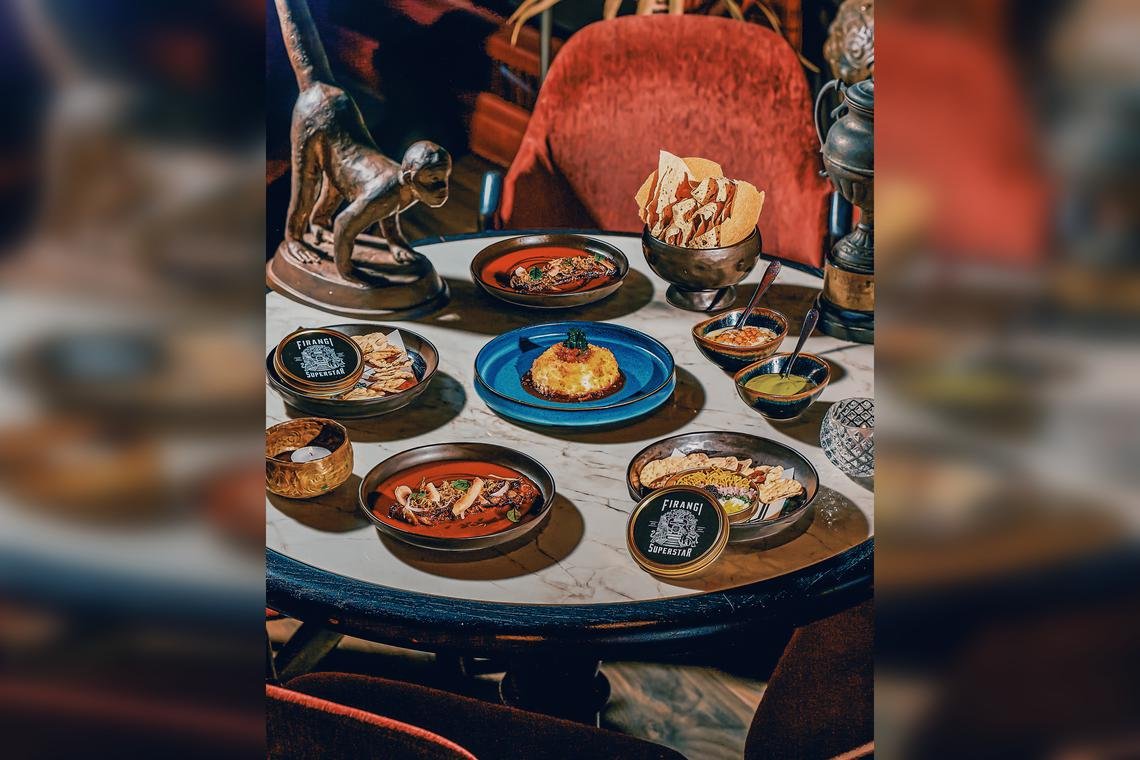
SINGAPORE – Do not be fooled by Firangi Superstar’s plain terracotta exterior. There is nothing minimalist about the experience here.
It overwhelms before the first bite even hits the table, spinning you through rooms crammed with memorabilia. Think American film-maker Wes Anderson on a trip through Delhi, a kind of kitschy fantasyland for colonial nostalgists wrapped in ornate wallpaper and studded with vintage firearms.
Thankfully, this meeting of worlds is far more amicable when confined to the kitchen of this modern Indian restaurant, which opened in 2021.
Firangi Superstar’s decor is as bold as its menu.
PHOTO: FIRANGI SUPERSTAR
Have a seat. Red? Blue? Cushion? Chair? Oh, here comes the menu, recently revamped and folded into a newspaper – with actual clippings, by the way, just in case you were done gawking at the mounted moose heads on the wall and wanted something else to look at.
Open it up. Today’s big story is a list of dishes, both old and new, Indian and international, all with characteristically eyebrow-waggling names.
Some riff off old iterations – This Is Also Not Aloo Gobi ($18++) still holds the traditional curry at arm’s length, even as it borrows its taste. Others squeeze in a winky pun – We’re Goan-Ing To Porto! ($96) beckons to diners with grilled Iberico pork and sorpotel chilli sauce.
Big personalities work only if backed up with big flavours, and Firangi Superstar’s bite is as good as its bark. Starters like Papi’s Jammed Gun ($29++), wagyu beef tartare with caviar, grated egg and gunpowder spice, and Big Baller Peperoner ($28++), its version of paneer Manchurian, with fried burrata and Manchurian chilli sauce, expertly fuse Western ideas with south Asian flair.
The Bengal Bake-Off from Firangi Superstar.
PHOTO: FIRANGI SUPERSTAR
Off to a riotous start, I move on to mains. The Bengal Bake-Off ($108++) is trotted out in show-stopping fashion: a salt-baked seabass emerges from its crust, tender and steaming, and is robed in Kasundi cream.
Back In The Saddle ($21++ for 100g) triumphantly rides in on tandoori-spiced lamb, crowned with confit garlic and chilli leaf. All these dishes also come in vegetarian form, should you so desire.
In the middle of this lip-smacking extravagance, a few humble sides quietly sneak their way onto the table. Turn your attention immediately to the black garlic naan ($14++). Look how pillowy the bread is, breathe in its nutty fragrance. You already know it is going to be a knockout.
End the night with some banoffee fritters ($14++) or Rasmalai “tres leches” ($16++). Recline back on your throne of pillows, cocktail or royal melon lassi ($20++) in hand.
Firangi – Hindi slang for foreigner – or no, one really does feel like a superstar here.
Where: 01-03, 20 Craig Road
MRT: Maxwell/Tanjong Pagar
Open: Noon to 2.30pm, 5.30 to 10pm (Mondays to Saturdays)
Info:
www.firangisuperstar.com
-

 Brand Stories3 weeks ago
Brand Stories3 weeks agoBloom Hotels: A Modern Vision of Hospitality Redefining Travel
-

 Brand Stories2 weeks ago
Brand Stories2 weeks agoCheQin.ai sets a new standard for hotel booking with its AI capabilities: empowering travellers to bargain, choose the best, and book with clarity.
-

 Destinations & Things To Do3 weeks ago
Destinations & Things To Do3 weeks agoUntouched Destinations: Stunning Hidden Gems You Must Visit
-

 Destinations & Things To Do2 weeks ago
Destinations & Things To Do2 weeks agoThis Hidden Beach in India Glows at Night-But Only in One Secret Season
-

 AI in Travel3 weeks ago
AI in Travel3 weeks agoAI Travel Revolution: Must-Have Guide to the Best Experience
-

 Brand Stories1 month ago
Brand Stories1 month agoVoice AI Startup ElevenLabs Plans to Add Hubs Around the World
-

 Brand Stories4 weeks ago
Brand Stories4 weeks agoHow Elon Musk’s rogue Grok chatbot became a cautionary AI tale
-

 Brand Stories2 weeks ago
Brand Stories2 weeks agoContactless Hospitality: Why Remote Management Technology Is Key to Seamless Guest Experiences
-

 Asia Travel Pulse1 month ago
Asia Travel Pulse1 month agoLooking For Adventure In Asia? Here Are 7 Epic Destinations You Need To Experience At Least Once – Zee News
-

 AI in Travel1 month ago
AI in Travel1 month ago‘Will AI take my job?’ A trip to a Beijing fortune-telling bar to see what lies ahead | China





